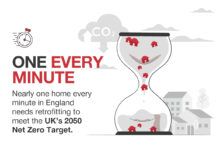

Palmer Market Research’s new report into the performance and prospects of the UK window and door industry, warns of ‘significant headwinds’, with a slowdown in the housing market and uncertainty surrounding Brexit, contributing to market contraction.
Published this month [Sept], Palmer’s new market research report, The Window, Door and Conservatory Markets in Housing in Great Britain, accounts that the industry performed above forecast in 2016. This included growth of 1% in volume terms and 7% in value terms to £4.5bn, driven by a shift towards higher-end products.
This included significant growth in bi-fold doors and growing sales of foiled and mechanically jointed/timber-effect PVC-U windows, the former up 9.3% in 2016 to 42,700 door sets.
The market for windows in total grew 1.2% to 6.82million frames and remains dominated by PVC-U. This this was, however, outstripped by a 5.5% increase in installed value to £2.38bn, driven by a shift to ‘higher-end’ products.
The ‘trade-off’ to this growth was a slowing in the volume of the PVC-U market and a continuing decline in sales of timber windows – which have fallen in volume by more than 60% since 2000.
More positively, the report found that average installed prices of conservatories were up by 12%, while conservatory replacements saw growth of 6%, although this was offset by a decline in first time installations of 4%.
If the industry performed above expectation in 2016, Palmer is far less sanguine about its prospects going forward.
The report paints a complex picture defined by pockets of substantial growth but delivered against a forecast backdrop of market contraction – in volume terms at least – of 4% this year, 2% in 2018 and 1% in 2019 before a return to moderate growth in 2020.
Robert Palmer, director, Palmer Market Research, said: “The industry has out-performed our forecasts last year but we’re now seeing near stagnation in the housing market, which is a tell tail sign of tougher economic conditions to come. This and the uncertainty around Brexit has led to a weakening of consumer confidence, which we expect to bite in the second half of this year and through next.”
He continued: “This is already contributing to a level of hesitancy among housebuilders, which will make government policy and continuing investment in the Help-to-Buy scheme, increasingly key going forward.
“The social sector may be less affected by Brexit but it faces its own budgetary pressures, while we expect some funding to be diverted to the replacement of cladding and improvements to the safety of high-rise buildings in the fallout from the Grenfell Tower disaster.”
If these factors present generally unfavourable conditions, The Window, Door and Conservatory Markets in Housing in Great Britain 2017 nonetheless identifies some significant areas of growth going forward. These are for the most part defined by product and material type.
The growth recorded in bi-fold door sales and those of mechanically jointed PVC-U windows means that both are tipped for significant growth going forward as part of the general shift to higher end products. The fortunes for windows, doors and conservatories are again mixed, defined by a combination of installation and material type.
Palmer continued: “What we’re seeing is a very real shift in proposition. This in general is leading away from volume product to a higher end higher margin offer. This is defined by material type, by product and even the design of those products, for example the shift to mechanical jointing and flush casements in PVC-U.
“What is also clear is that we’re already seeing some pretty unfavourable economic headwinds and these are unlikely to dissipate anytime soon, which makes product development in the right areas a key foundation of future growth but also longer-term viability.”
www.palmermarketresearch.co.uk



